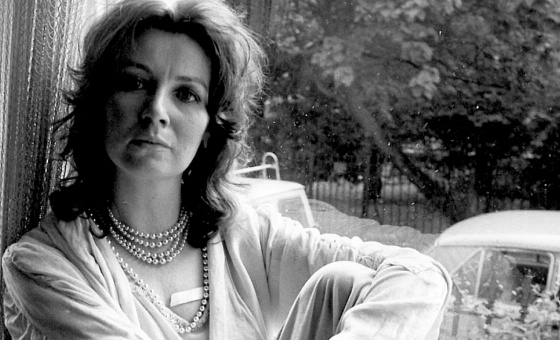This is the last article you can read this month
You can read more article this month
You can read more articles this month
Sorry your limit is up for this month
Reset on:
Please help support the Morning Star by subscribing here
Small Labyrinths, Elixir and Celestial Circle
Marilyn Mazur
(ECM)
5/5
The phenomenal percussionist Marilyn Mazur has the drums of the world in her blood. She was born in Brooklyn of African-American and Polish parentage in 1955 and came to live in Denmark when she was six.
Mazur began a musical life as a dancer, but burned to the drums in 1974, eventually gaining a degree in percussion from the Royal Danish Academy of Music. She drummed with prime Danish jazz musicians such as guitarist Pierre Doerge and his New Jungle Orchestra, bassist Niels-Henning Oersted Pedersen and tenorist John Tchicai, and began a 14-year touring partnership with the Norwegian saxophonist Jan Garbarek in 1985.
In the same year she recorded the album Aura with Miles Davis and in 1987 she worked with Davis associates Wayne Shorter and Gil Evans, gradually compounding her expertise with a huge wealth of international percussion instruments as she travelled with her own bands Future Song (from 1989) and Percussion Paradise, specialising in educative performances for children.
Her first album for the Munich-based ECM label was Small Labyrinths in 1994, made with Future Song, which included trumpeter Nils Petter Molvaer, guitarist Eivind Aarset, saxophonist Hans Ulrik, pianist Elvira Plenar and bassist Klavs Hovman. Aina Kemanis was the vocalist and Audun Kleive a second drummer.
Mazur’s cosmos of striking, caressing, clattering, booming, tinkling and pounding is at the centre of her album.
Drum Tunnel echoes with the pulsing momentum of vibrating skin and after the piano opening of The Dreamcatcher, Kemanis reveried vocals and Ulrik’s lyrical reeds comes Visions in the Wood, where Mazur’s drums summon the horns of Molvaer and Ulrik to perform a dance of sound in a union of nature and fantasy with Mazur’s pounding drumscape.
Back to Dreamfog Mountain is a fantastic journey with Kemanis’s spectral voice lost in the mist.
Mazur’s sonic stories reflect the tales of her compatriot Hans Christian Andersen, and in See There her melody, the horns and Hovman’s bass conjure a land beyond the real, delving into myth with springing sounds of hidden narrative, which is perhaps why they connect so urgently with the ears and imagination of children.
Mazur’s 2005 album with Garbarek, Elixir, has 21 short tracks with the percussionist playing marimbas, water phone, log drum, sheep bells, Indian cowbells, gongs and metal utensils to name but a few.
She creates some entirely new percussive sounds in recorded jazz, while staying close to melody in tracks such as Dunun Song, where Garbarek’s tenor tells the tell. He plays a jaunty soprano on the brief but beautiful Joy Chant and Mazur sets herself momentarily loose on a myriad of bells in Bell Painting.
Mother Drum pounds a reprise of Duke Ellington’s dictum that “the drums is a woman” — all over the world. Garbarek blows flute over Mazur’s scintillating hand-drums all through Spirit of Sun, and the rural trance of Sheep Dream is provoked by hollow wood bursting into sonorous life.
In Toben Dance Garbarek’s tenor sounds like a giant buzzing insect over Mazur’s throbbing drums.
There’s more than a touch of Manchester in Mazur’s 2011 album Celestial Circle, with the Mancunian pianist John Taylor.
The Swedish bassist Anders Jormin is present too, with his countrywoman the vocalist Josefine Cronholm.
Taylor’s lucidly serene piano adds a new centre to Mazur’s rhythmic and pulsating sound. As soon as he introduces the opening track Your Eyes, one of his own, there is a fresh lyricism, and snow is in his notes in Winterspell, almost a Pennine snow with Mazur’s brushes beside him and Jormin’s delving bass.
Secret Crystals is almost all Taylor, with Mazur’s deft percussion urging him on.
A sleeve photograph shows Mazur surrounded by a gantry of bells and a forest of cymbals and drums — a child’s percussive idyll. In Color Sprinkle and the final gong-emphatic track Transcending, she sets them afire as if the drum is prehistory, all-history and the boom of the future: complex, ever-changing and ever-prophesying.





